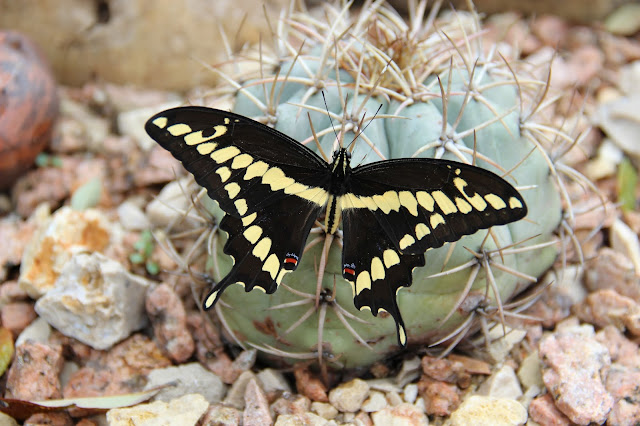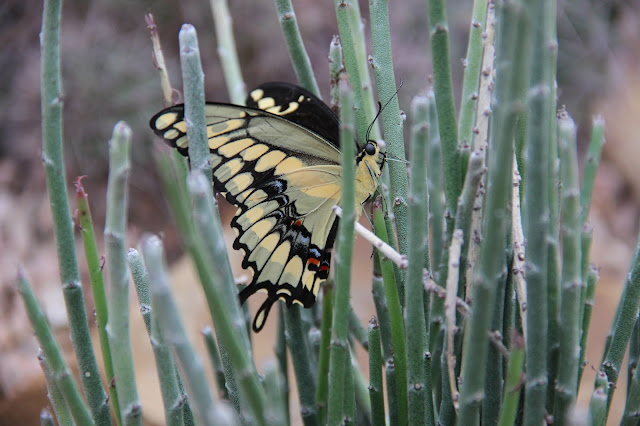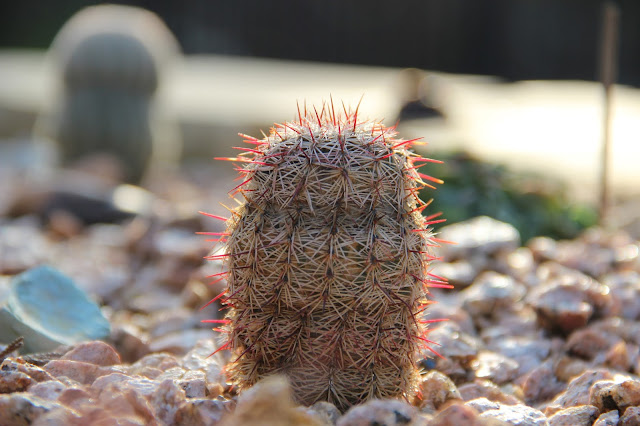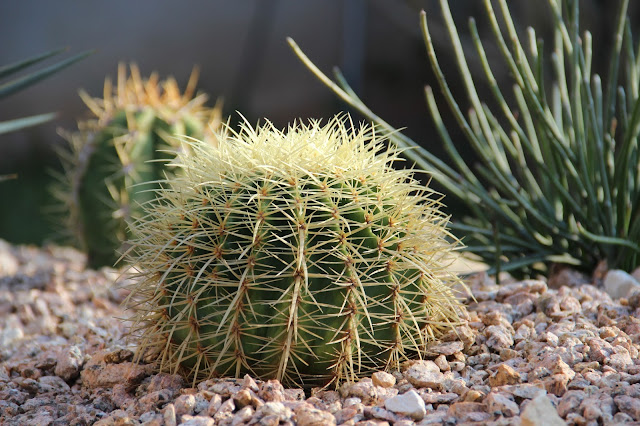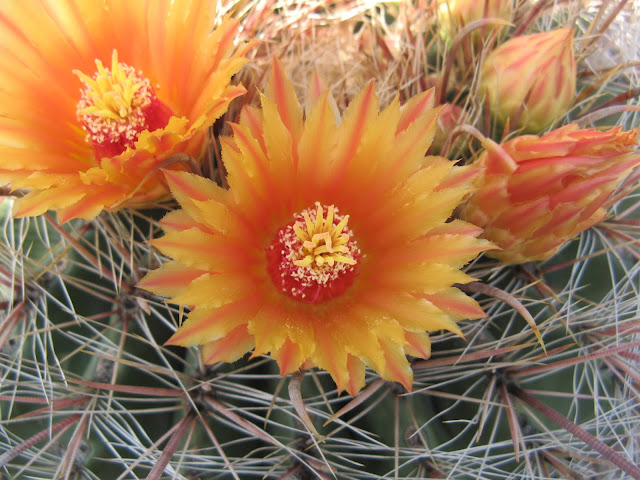 |
| One of my favorite photographs, showing the multicolor transparent spines of this Fishhook Cactus (Sclerocactus uncinatus) bought from Rio Grande Cacti out of New Mexico. This cactus, also known as the Catclaw Cactus, is native to West Texas, likes it very hot and dry and is hardy to at least 10 degree Fahrenheit. |
 |
| Mammillaria pottsii |
 |
| Heraclides rumiko aka Papilio rumiko |
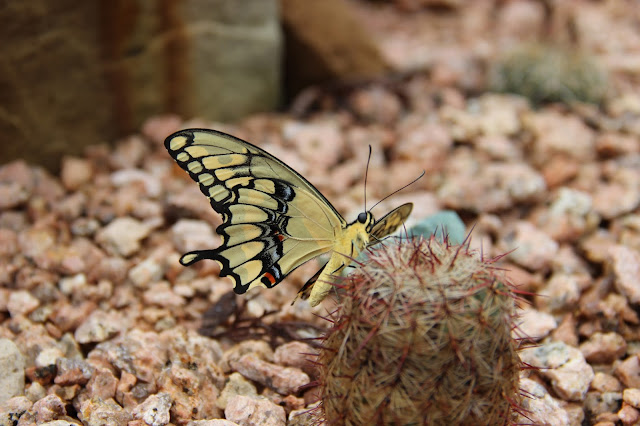 |
| Heraclides rumiko aka Papilio rumiko |


